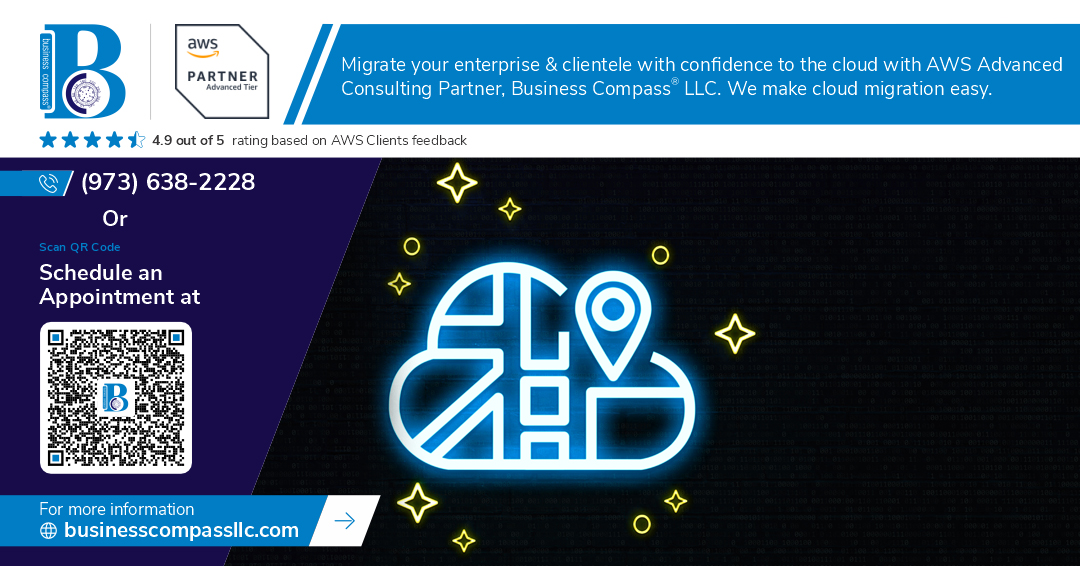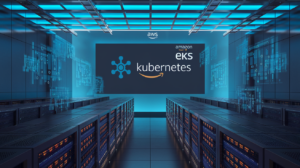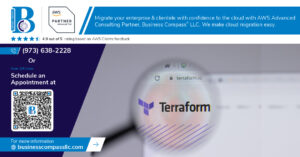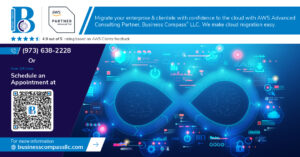🚀 Are you ready to supercharge your AWS database integration? Imagine seamlessly connecting your RDS, DynamoDB, Aurora, Redshift, and ElastiCache with other powerful AWS services. It’s not just a dream – it’s the key to unlocking unprecedented efficiency and scalability in your cloud infrastructure.
But here’s the challenge: integrating these diverse database services can be a daunting task. 😓 The complexities of data management, security concerns, and performance optimization often leave even experienced developers scratching their heads. Don’t worry, though! We’ve got you covered with a comprehensive guide that will transform you from a database novice to an AWS integration pro.
In this blog post, we’ll dive deep into the world of AWS database integration. From understanding the unique strengths of each database service to mastering security considerations and monitoring techniques, we’ll equip you with the knowledge and tools you need to create a robust, high-performance database ecosystem. Get ready to explore how to leverage RDS, harness the power of DynamoDB, maximize Aurora’s potential, and much more. Let’s embark on this exciting journey to elevate your AWS database game! 🏆
Understanding AWS Database Services
Overview of RDS, DynamoDB, Aurora, Redshift, and ElastiCache
AWS offers a diverse range of database services to cater to various application needs. Let’s take a closer look at five key database services:
- Amazon RDS (Relational Database Service)
- Amazon DynamoDB
- Amazon Aurora
- Amazon Redshift
- Amazon ElastiCache
Each of these services has unique characteristics and is designed to address specific use cases in the world of data management and storage.
Key features and use cases for each database service
| Database Service | Key Features | Use Cases |
|---|---|---|
| RDS | Managed relational databases, automatic backups, scalability | Transactional applications, e-commerce platforms |
| DynamoDB | Fully managed NoSQL, low-latency, auto-scaling | Mobile apps, gaming, IoT data |
| Aurora | MySQL and PostgreSQL compatibility, high performance | Enterprise applications, SaaS products |
| Redshift | Petabyte-scale data warehousing, columnar storage | Business intelligence, big data analytics |
| ElastiCache | In-memory caching, support for Redis and Memcached | Real-time applications, caching layers |
Comparing AWS database offerings
- Performance: Aurora offers the highest performance for relational databases, while DynamoDB excels in low-latency NoSQL scenarios.
- Scalability: DynamoDB and Aurora provide seamless scaling, with RDS offering vertical scaling options.
- Cost-effectiveness: RDS is generally more cost-effective for smaller workloads, while Redshift shines for large-scale data analytics.
- Ease of use: ElastiCache and DynamoDB are the easiest to set up and manage, with minimal configuration required.
Understanding these differences is crucial for selecting the right database service for your specific needs. In the next section, we’ll delve into integrating RDS with other AWS services to create powerful, scalable applications.
Integrating RDS with AWS Services
Connecting RDS to EC2 instances
Connecting Amazon RDS to EC2 instances is a fundamental integration in AWS architecture. This connection allows your application servers to interact with your database seamlessly. To establish this connection:
- Ensure both RDS and EC2 are in the same VPC
- Configure security groups to allow traffic
- Use the RDS endpoint in your application code
Here’s a quick comparison of connection methods:
| Method | Pros | Cons |
|---|---|---|
| Public subnet | Easy setup | Less secure |
| Private subnet | Enhanced security | Requires NAT gateway |
| VPC peering | Flexible architecture | More complex setup |
Using RDS with Lambda functions
Lambda functions can interact with RDS databases, enabling serverless database operations. Key steps include:
- Configure Lambda in the same VPC as RDS
- Set up appropriate IAM roles
- Use connection pooling for efficiency
Integrating RDS with Elastic Beanstalk
Elastic Beanstalk simplifies the deployment of applications that use RDS. When integrating:
- Create RDS instance within Elastic Beanstalk
- Or, connect to an external RDS instance
- Configure environment properties for database connection
Implementing RDS in VPC environments
Implementing RDS in a VPC enhances security and network isolation. Best practices include:
- Place RDS in private subnets
- Use security groups to control access
- Implement multi-AZ deployments for high availability
By following these integration strategies, you can effectively leverage RDS across various AWS services, enhancing your application’s scalability and performance. Next, we’ll explore how to leverage DynamoDB in AWS ecosystems, providing insights into NoSQL database integration.
Leveraging DynamoDB in AWS Ecosystems
DynamoDB Streams with Lambda
DynamoDB Streams and AWS Lambda create a powerful combination for real-time data processing and event-driven architectures. When you enable DynamoDB Streams, it captures a time-ordered sequence of item-level modifications in your table. Lambda functions can then automatically react to these changes, enabling various use cases:
- Real-time analytics
- Notifications
- Data replication
- Automated workflows
Here’s a comparison of DynamoDB Streams features:
| Feature | Description |
|---|---|
| Capture Mode | New image, Old image, or Both |
| Retention Period | Up to 24 hours |
| Scalability | Automatic scaling with table throughput |
| Consistency | Eventual consistency |
To set up DynamoDB Streams with Lambda:
- Enable Streams on your DynamoDB table
- Create a Lambda function
- Configure the Lambda trigger
- Test and monitor the integration
Using DynamoDB with API Gateway
Integrating DynamoDB with Amazon API Gateway allows you to create serverless, scalable APIs that interact directly with your database. This combination is ideal for building mobile and web applications that require fast, efficient data access.
Key benefits of this integration include:
- Reduced latency
- Simplified architecture
- Automatic scaling
- Cost-effectiveness
To implement this integration:
- Design your API in API Gateway
- Create IAM roles for API Gateway
- Set up DynamoDB integration
- Configure request/response mappings
- Deploy and test your API
Integrating DynamoDB with S3 for data archiving
Combining DynamoDB with Amazon S3 enables efficient data archiving and long-term storage solutions. This integration is particularly useful for:
- Compliance requirements
- Cost optimization
- Data analysis on historical data
Here’s a simple architecture for DynamoDB to S3 archiving:
- Use DynamoDB Streams to capture changes
- Trigger a Lambda function on stream events
- Lambda processes and formats the data
- Lambda writes the formatted data to S3
This approach ensures that your S3 archive stays up-to-date with your DynamoDB data, providing a reliable backup and analysis source.
Maximizing Aurora’s Potential
Aurora Serverless with AWS Fargate
Aurora Serverless paired with AWS Fargate offers a powerful, scalable solution for database management. This combination allows for automatic scaling of both compute and database resources, ensuring optimal performance and cost-efficiency.
Key benefits of this integration:
- On-demand scaling
- Pay-per-use pricing
- Reduced operational overhead
- Seamless integration with containerized applications
| Feature | Aurora Serverless | AWS Fargate |
|---|---|---|
| Scaling | Automatic database scaling | Automatic container scaling |
| Billing | Per-second billing | Per-second billing |
| Management | Fully managed by AWS | Serverless container management |
| Use Case | Variable workloads | Microservices architecture |
Implementing Aurora Global Database
Aurora Global Database enables worldwide distribution of your data with minimal latency. This feature is crucial for applications requiring global reach and high availability.
Steps to implement:
- Create primary Aurora cluster
- Add secondary regions
- Configure replication
- Set up read replicas in each region
Using Aurora with AWS AppSync for GraphQL APIs
Integrating Aurora with AWS AppSync allows for efficient creation and management of GraphQL APIs. This combination provides a seamless way to build scalable, real-time applications with robust data management capabilities.
Benefits:
- Real-time data synchronization
- Simplified API development
- Improved application performance
- Enhanced data security
Integrating Aurora with AWS Glue for ETL processes
AWS Glue, when integrated with Aurora, streamlines ETL (Extract, Transform, Load) processes. This integration enables efficient data preparation and loading for analytics and machine learning applications.
Key advantages:
- Automated data discovery
- Scalable ETL jobs
- Serverless architecture
- Support for various data formats
By leveraging these integrations, you can maximize Aurora’s potential and create powerful, scalable database solutions within the AWS ecosystem. Next, we’ll explore how to harness Redshift’s analytics capabilities to further enhance your data processing workflow.
Harnessing Redshift’s Analytics Power
Connecting Redshift to QuickSight for BI
Amazon Redshift’s powerful analytics capabilities can be further enhanced by connecting it to QuickSight, AWS’s cloud-native business intelligence (BI) service. This integration allows organizations to create interactive dashboards and perform ad-hoc analysis on their Redshift data.
To connect Redshift to QuickSight:
- Set up a Redshift cluster
- Configure network access
- Create a QuickSight account
- Add Redshift as a data source in QuickSight
- Import and analyze data
Benefits of this integration include:
- Real-time data visualization
- Scalable analytics
- Cost-effective BI solution
| Feature | Redshift | QuickSight |
|---|---|---|
| Purpose | Data warehousing | Data visualization |
| Scalability | Petabyte-scale | Thousands of users |
| Pricing model | Cluster-based | Pay-per-session |
Using Redshift Spectrum with S3 data lakes
Redshift Spectrum extends the analytic power of Redshift to your S3 data lake, allowing you to query exabytes of unstructured data without loading it into Redshift tables. This integration is particularly useful for organizations with large amounts of historical or infrequently accessed data.
Key benefits of using Redshift Spectrum with S3:
- Query data directly in S3 without ETL
- Separate storage and compute
- Seamless integration with existing Redshift queries
Integrating Redshift with AWS EMR for big data processing
Combining Redshift with Amazon EMR (Elastic MapReduce) creates a powerful big data processing pipeline. EMR can handle complex data transformations and machine learning tasks, while Redshift excels at fast querying and analytics on structured data.
Steps to integrate Redshift with EMR:
- Set up an EMR cluster
- Configure Redshift as a data source/destination for EMR jobs
- Use EMR to process and transform data
- Load processed data into Redshift for analysis
This integration enables advanced analytics workflows, combining the strengths of both services for comprehensive data insights. Next, we’ll explore how ElastiCache can be used to optimize performance in your AWS database ecosystem.
Optimizing Performance with ElastiCache
Implementing ElastiCache as a session store for web applications
ElastiCache serves as an excellent session store for web applications, significantly improving performance and reducing load on primary databases. By utilizing ElastiCache, you can:
- Decrease latency by storing session data in-memory
- Enhance scalability by offloading session management from application servers
- Improve user experience with faster response times
Here’s a comparison of session storage options:
| Storage Option | Latency | Scalability | Persistence |
|---|---|---|---|
| ElastiCache | Low | High | Configurable |
| Database | Medium | Medium | High |
| Local Storage | Very Low | Low | Low |
To implement ElastiCache as a session store:
- Configure ElastiCache cluster
- Update application code to use ElastiCache for session management
- Implement session serialization and deserialization
- Set appropriate TTL for session data
Using ElastiCache with Lambda for faster data retrieval
Integrating ElastiCache with Lambda functions can dramatically reduce data retrieval times and improve overall application performance. This combination is particularly useful for:
- Caching frequently accessed data
- Storing temporary computation results
- Sharing data across multiple Lambda invocations
To leverage ElastiCache with Lambda:
- Create an ElastiCache cluster within a VPC
- Configure Lambda function to access the VPC
- Implement caching logic in Lambda code
- Use appropriate SDK to interact with ElastiCache
Integrating ElastiCache with Amazon ECS for containerized applications
ElastiCache can significantly enhance the performance of containerized applications running on Amazon ECS. This integration allows for:
- Faster data access for microservices
- Reduced load on backend databases
- Improved scalability of containerized applications
To integrate ElastiCache with ECS:
- Create an ElastiCache cluster in the same VPC as ECS tasks
- Configure security groups to allow access from ECS tasks
- Update container definitions to include ElastiCache connection details
- Implement caching logic in application code
By optimizing performance with ElastiCache across these different scenarios, you can significantly improve the overall efficiency and responsiveness of your AWS-based applications. Next, we’ll explore the crucial aspect of security considerations when integrating databases with other AWS services.
Security Considerations for Database Integration
Implementing IAM roles for secure access
When integrating databases with other AWS services, implementing IAM roles is crucial for maintaining secure access. IAM roles provide temporary credentials, eliminating the need for hardcoded access keys. This approach enhances security and simplifies access management.
Key benefits of using IAM roles:
- Fine-grained access control
- Automatic credential rotation
- Centralized management
- Easier compliance with security policies
| IAM Role Type | Use Case |
|---|---|
| EC2 Instance Role | For applications running on EC2 instances |
| Lambda Execution Role | For Lambda functions accessing databases |
| ECS Task Role | For containerized applications using ECS |
Encrypting data in transit and at rest
Encryption is a fundamental aspect of database security. AWS provides robust encryption options for both data in transit and at rest.
For data in transit:
- Use SSL/TLS connections
- Enable AWS Certificate Manager for managing SSL/TLS certificates
- Implement VPN or AWS Direct Connect for secure network connections
For data at rest:
- Enable encryption on RDS instances
- Use server-side encryption for DynamoDB tables
- Implement transparent data encryption (TDE) for Redshift clusters
Using AWS KMS for key management
AWS Key Management Service (KMS) is essential for managing encryption keys securely. It integrates seamlessly with various AWS services, providing a centralized solution for key management.
Benefits of using AWS KMS:
- Centralized key management
- Automatic key rotation
- Integration with AWS CloudTrail for auditing
- FIPS 140-2 validated hardware security modules
Implementing VPC security groups and network ACLs
VPC security groups and network ACLs provide network-level security for your database integrations. They act as virtual firewalls, controlling inbound and outbound traffic.
Best practices:
- Use security groups for instance-level security
- Implement network ACLs for subnet-level security
- Follow the principle of least privilege
- Regularly audit and update security rules
By implementing these security measures, you can ensure robust protection for your integrated database systems within the AWS ecosystem.
Monitoring and Managing Integrated Database Systems
Utilizing Amazon CloudWatch for performance metrics
Amazon CloudWatch is a powerful tool for monitoring and managing integrated database systems in AWS. It provides real-time insights into your database performance, allowing you to:
- Track CPU utilization, memory usage, and disk I/O
- Set up custom metrics for specific database queries
- Create alarms for performance thresholds
Here’s a comparison of key CloudWatch metrics for different AWS database services:
| Metric | RDS | DynamoDB | Aurora | Redshift | ElastiCache |
|---|---|---|---|---|---|
| CPU Utilization | ✓ | ✓ | ✓ | ✓ | ✓ |
| Free Storage Space | ✓ | N/A | ✓ | ✓ | N/A |
| Read IOPS | ✓ | ✓ | ✓ | ✓ | ✓ |
| Write IOPS | ✓ | ✓ | ✓ | ✓ | ✓ |
| Latency | ✓ | ✓ | ✓ | ✓ | ✓ |
Implementing AWS CloudTrail for audit logging
AWS CloudTrail complements CloudWatch by providing a comprehensive audit trail of all API calls made to your integrated database systems. This is crucial for:
- Security analysis
- Resource change tracking
- Compliance auditing
Using AWS Config for compliance monitoring
AWS Config helps ensure your database configurations remain compliant with internal policies and industry regulations. Key features include:
- Continuous assessment of resource configurations
- Automated remediation of non-compliant resources
- Custom rules for specific compliance requirements
Leveraging AWS Systems Manager for database management
AWS Systems Manager streamlines database management tasks across your integrated systems:
- Automate patch management
- Implement consistent security policies
- Execute maintenance tasks at scale
By combining these tools, you can create a robust monitoring and management strategy for your integrated AWS database systems, ensuring optimal performance, security, and compliance.
Integrating AWS database services with other AWS offerings opens up a world of possibilities for building robust, scalable, and efficient applications. From RDS’s seamless integration with application servers to DynamoDB’s serverless capabilities, Aurora’s high performance, Redshift’s analytics prowess, and ElastiCache’s caching solutions, each database service offers unique advantages when combined with other AWS services.
As you embark on your database integration journey, remember to prioritize security, implement proper monitoring, and continuously optimize your system’s performance. By leveraging the full potential of AWS’s integrated ecosystem, you can create powerful, data-driven applications that meet the evolving needs of your business and users. Start exploring these integration possibilities today and unlock the true power of your AWS infrastructure.



















